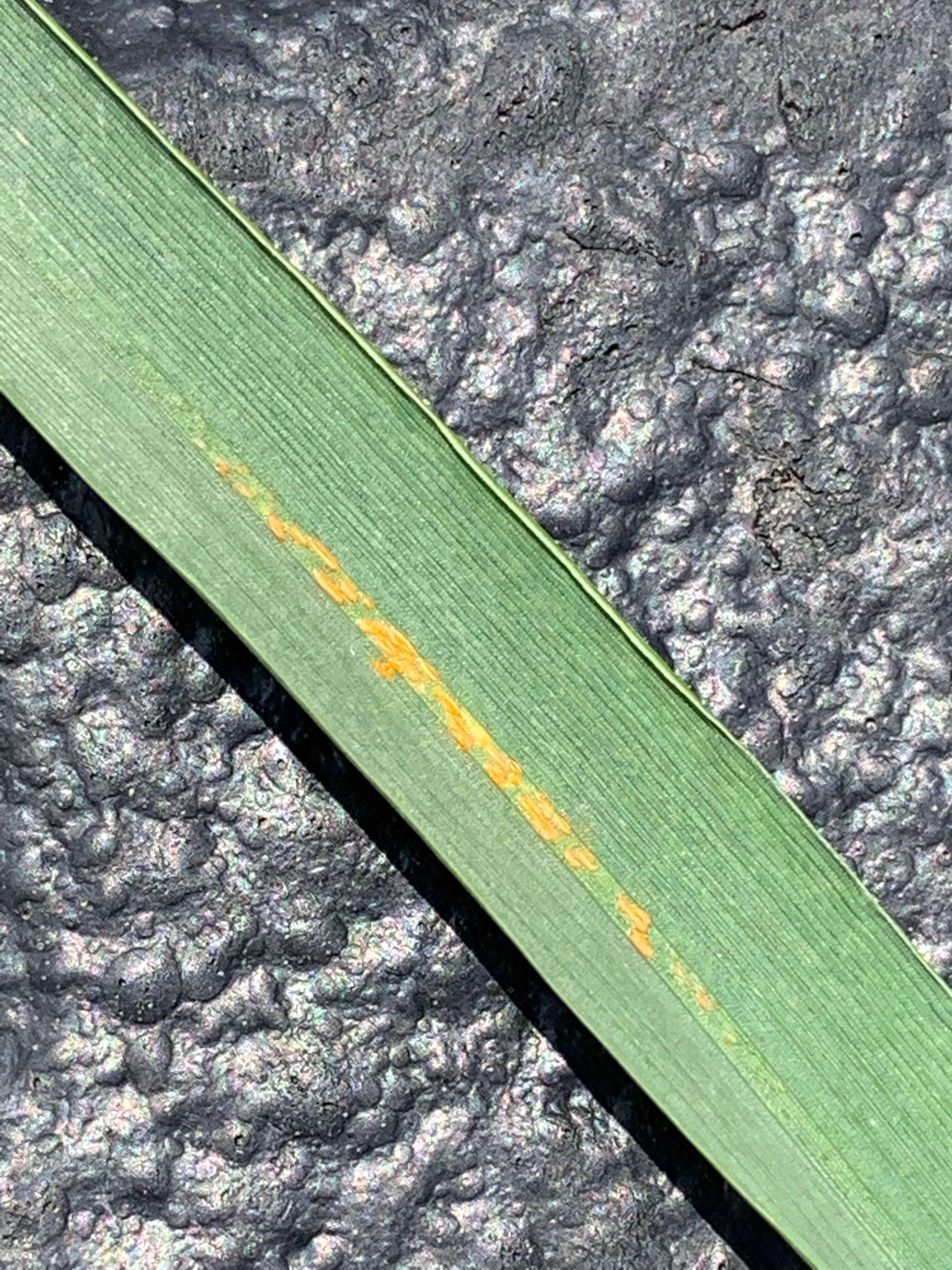2020 Wheat Stripe Rust
Rust diseases are among the most widespread and economically important diseases in the wheat crop. The fungi causing diseases such as leaf rust, stripe rust and stem rust are known for their ability to increase rapidly. The greatest yield loss occurs when these diseases occur before the heading stage of development. Early detection, proper identification, and disease management are critical.
"Scouting efforts from across Kansas have reported several new occurrences of stripe rust this week. So far, incidence has generally been low (> 1%), and reports have been limited to the lower-to-mid canopy. There is evidence that disease incidence is increasing at some locations and producers should continue scouting efforts. Lower canopy infections are less likely to result in yield reductions. When environmental conditions are favorable (extended periods of dew, for example), infections in the lower leaves may spread to the upper canopy and neighboring plants, resulting in reduced yield. Spread within a field and symptoms that have moved to the upper canopy may warrant a fungicide application. To preserve yield, it is critical to protect the flag leaf." (May 8th KSRE eUpdate)

Wheat stripe rust found in Edwards County just west of Kinsley.
Photo courtesy of Tyree Ag salesman, Lacey Parton.
Stripe rust commonly affects the leaf blades. The lesions are normally yellow to orange in color and are small, round, and blister-like that merge to form stripes the length of the leaf. These lesions reduce the photosynthetic area reducing the production of sugars for the plant.
Fungicides can best protect the critical growth stages from disease when applied between full emergence of the flag leaf and flowering. Fungicide applications made before flag leaf emergence generally result in less disease control on the upper leaves during grain development and smaller yield responses.
Scouting tips
When scouting wheat, it is important to look down within middle layers of the crop canopy for symptoms of disease. Wheat puts out new leaves rapidly during the vegetative growth prior to heading. In some cases, plants may add a new leaf every 7-10 days. These new leaves at the top of the canopy are less likely to express disease symptoms simply because it takes time (10-14 days) for the disease to develop. Focus on leaves that where present over the last 2 weeks. These leaves have a higher probability of infection than the new leaves at the top of the canopy. (Eric DeWolf - April 17th KSRE eUpdate)
Learn more here!
Evaluating the Need for Wheat Foliar Fungicides
Foliar Fungicide Efficacy for Wheat Disease Management
____________________________________________________________________
Contact Tyree Ag today to discuss which fungicide
product is best to meet your needs.

Toll Free: 866-897-3324
*Current customers please contact your salesman or call the office, where your information
will be given to a salesman who will contact you directly.
________________________________________________________________________
KP
